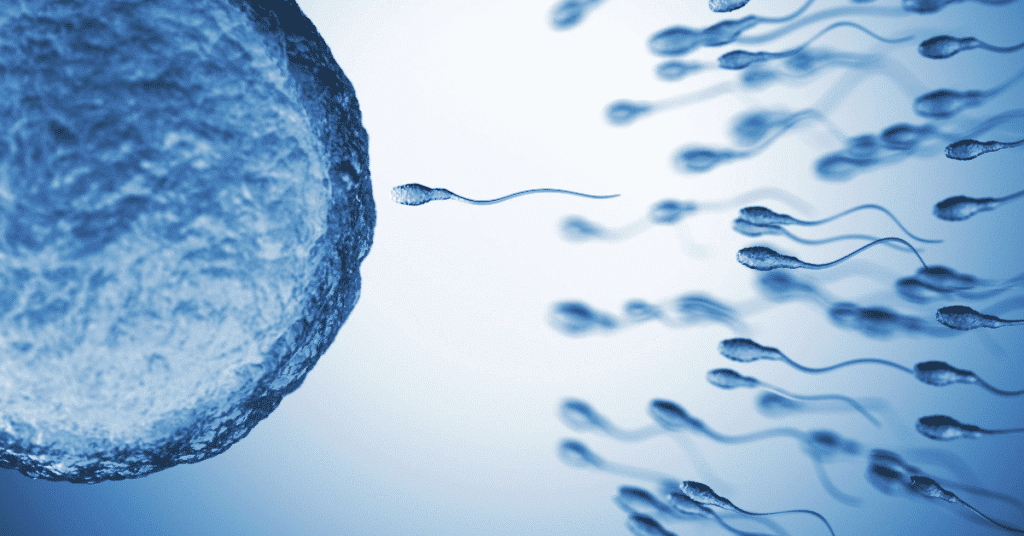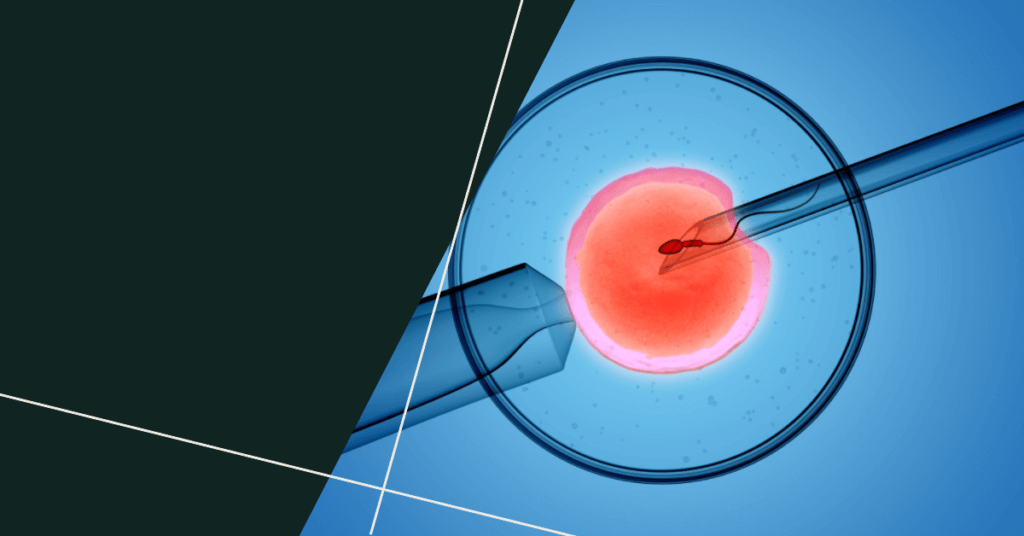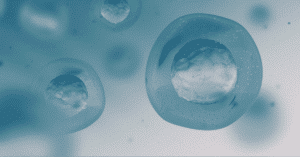
Unexplained infertility is a diagnosis given to couples who have been trying to conceive for at least a year, but no specific problem can be identified. Infertility diagnosis involves a series of tests and examinations to determine the cause of the problem, but in the case of unexplained fertility, all results come back normal. This can be frustrating for couples who are eager to start a family but cannot seem to find an answer as to why they are having difficulty conceiving. However, there are options available such as ivf treatment and ovulation kits to help determine the fertile window and increase the chances of spontaneous pregnancy.
Unlike other types of infertility, unexplained infertility cannot be treated with specific medical procedures such as IVF or IUI. According to a study published in Human Reproduction, women with unexplained infertility have similar menstrual cycle lengths and ovulation rates as women who conceive without any problem. However, some couples have reported spontaneous pregnancy after trying for a longer period, especially if the female partner has mild endometriosis. It is important for couples to identify their fertile window and consider using clomiphene to increase their chances of conception. This means that there is no clear-cut solution for couples struggling with this type of infertility, but exploring different options and consulting with a healthcare provider can increase the likelihood of a successful pregnancy.
So how do infertile couples solve unexplained infertility? Unfortunately, there is no one-size-fits-all answer. However, there are several things that you can do to increase your chances of conceiving. One example is tracking your menstrual cycle using ovulation predictor kits or fertility apps, which can help you identify your most fertile days and time intercourse accordingly. IVF treatment may also be considered for those with low antral follicle counts or irregular menses.
It’s also important for infertile couples to make sure that both partners are healthy and taking care of their bodies. Eating a balanced diet, getting regular exercise, and avoiding unhealthy habits such as smoking can all improve fertility. Male infertility can be a factor in difficulty conceiving, but there are various infertility treatments available to help. It’s also important to track the fertile window, the optimal time for conception, to increase the chances of successful pregnancy.
Patience is key when dealing with unexplained fertility. It’s important not to get discouraged if it takes longer than expected to conceive during your fertile window. Many couples with unexplained fertility go on to have successful pregnancies without any standard infertility testing or medical intervention, but some may need to explore male infertility treatment options.
If you’re one of the many infertile couples struggling with unexplained infertility, it’s important to talk to your healthcare providers about possible solutions and next steps. They may recommend additional testing or refer you to a specialist who can provide more targeted treatment options. It’s also vital to seek support during this challenging time and learn about your fertile window to increase your chances of conceiving.

Causes and prevalence of unexplained infertility
Unexplained infertility, also known as idiopathic infertility, is a frustrating diagnosis for many couples struggling to conceive within their fertile window. It accounts for approximately 10-30% of all infertility cases and occurs when there is no obvious cause that can be identified through standard fertility testing during the menstrual cycle. In this section, we will discuss the causes and prevalence of unexplained infertility and provide support through informative images.
Causes of Unexplained Infertility
The causes of unexplained infertility are not clear, which makes it difficult for healthcare professionals to provide a specific treatment plan. However, certain factors may contribute to unexplained infertility. Age is one such factor as fertility declines with age in both men and women. Lifestyle factors such as smoking, alcohol consumption, and obesity can also affect fertility. Understanding the fertile window and menstrual cycle can support individuals trying to conceive. It is important to seek guidance from healthcare providers for personalized support.
Genetics may play a role in unexplained infertility as well, in contrast to the menstrual cycle. Studies have shown that genetic mutations or variations can impact sperm quality or egg development, which may require support from healthcare providers. Environmental factors such as exposure to toxins or pollutants may also contribute to unexplained infertility.
Some studies suggest that subtle abnormalities in egg or sperm quality or function may be responsible for unexplained infertility. For example, some women with unexplained infertility have been found to have poor egg quality despite having normal hormone levels. In contrast, tracking the menstrual cycle can provide support for healthcare providers in identifying potential issues.
Prevalence of Unexplained Infertility
Unexplained infertility affects a significant number of couples trying to conceive. According to the American Society for Reproductive Medicine (ASRM), up to 30% of couples who undergo diagnostic testing for infertility receive an unexplained diagnosis. However, there are various support options available to couples facing this challenge.
The prevalence of unexplained infertility varies by age group and other demographic factors. In contrast, younger women are less likely to experience unexplained infertility due to their higher ovarian reserve and better-quality eggs compared to women over the age of 35.
Treatment Options
Treatment options for unexplained fertility typically involve assisted reproductive technologies (ART) such as intrauterine insemination (IUI) or in vitro fertilization (IVF), which contrast in the way the sperm and egg are brought together. IUI involves placing sperm directly into the uterus during ovulation, while IVF involves fertilizing eggs outside of the body and then transferring them to the uterus.
Other treatment options for unexplained infertility include fertility drugs to stimulate ovulation or surgery to correct anatomical issues. However, these treatments are less effective for unexplained infertility than they are for other types of fertility issues.

Diagnostic tests for unexplained infertility: Hycosy, Three-Dimensional Sonography, Hystero Foam Sonography, FSH testing, antral follicle count
Hycosy: Assessing Fallopian Tubes and Uterus
When standard infertility testing has failed to identify a reason for a couple’s inability to conceive, additional diagnostic tests may be needed. One such test is Hysterosalpingo-contrast sonography (Hycosy), which assesses the fallopian tubes and uterus using contrast dye during a transvaginal ultrasound. The procedure involves injecting saline solution mixed with contrast dye into the uterus while an ultrasound is performed. The dye allows for visualization of the uterine cavity and fallopian tubes, checking for any blockages or abnormalities.
Hycosy is a minimally invasive procedure that can provide valuable information in diagnosing unexplained infertility. It is well-tolerated by most women, with only mild discomfort experienced during the procedure. Hycosy has been found to have high accuracy rates in detecting tubal patency, making it an effective tool in identifying potential issues that may be preventing conception.
Three-Dimensional Sonography: Evaluating Ovaries and Uterus
Another diagnostic test used in assessing unexplained infertility is three-dimensional (3D) sonography. This type of ultrasound provides more detailed images of the ovaries and uterus than traditional 2D ultrasounds, allowing for better visualization of any structural abnormalities or growths that may be impacting fertility.
During a 3D sonogram, sound waves are used to create multiple images of the reproductive organs from different angles. These images are then combined to create a 3D image that provides greater detail than traditional ultrasounds. This allows doctors to evaluate the size, shape, and function of the ovaries and uterus more accurately for fertility testing and unexplained infertility diagnosis.
Hystero Foam Sonography: Checking for Abnormalities
Hystero foam sonography (HSF) is another diagnostic test used in evaluating unexplained infertility. Like Hycosy, it involves the use of a contrast agent to visualize the uterus and fallopian tubes. However, instead of saline solution, foam is used to fill the uterus and fallopian tubes.
HSF has been found to be particularly effective in identifying abnormalities such as polyps or fibroids that may be impacting fertility. It is also useful in detecting any scarring or adhesions within the reproductive organs that may be affecting conception.
FSH Testing: Evaluating Ovarian Function
In addition to imaging tests, hormone testing can also provide valuable information in diagnosing unexplained infertility. Follicle-stimulating hormone (FSH) testing measures levels of this hormone during the luteal phase of a woman’s menstrual cycle. Elevated FSH levels can indicate reduced ovarian function, which can impact fertility.
Antral Follicle Count: Assessing Ovarian Reserve
Another important diagnostic test used in evaluating unexplained infertility is antral follicle count (AFC). This test involves counting the number of small follicles present in the ovaries at the beginning of a menstrual cycle. The number of follicles present can provide insight into a woman’s ovarian reserve and potential for conception.
Poor egg and sperm quality in unexplained infertility
Couples who have been trying to conceive for a year or more without success may be diagnosed with unexplained infertility. This diagnosis is given when no clear reason can be found for their inability to conceive, despite thorough testing. Poor egg and sperm quality are common factors in unexplained infertility among couples. In this section, we will discuss how poor egg and sperm quality can affect fertility.
Male Infertility: Poor Sperm Quality
In males, poor sperm quality can be caused by low sperm count, low motility, or abnormal morphology. Fertility testing can help determine if any of these factors are affecting a man’s ability to conceive with his partner. Low sperm count means that there are fewer than 15 million sperm per milliliter of semen. Low motility refers to the inability of the sperm to swim properly, which makes it difficult for them to reach the egg. Abnormal morphology means that the shape of the sperm is not normal, which affects their ability to fertilize an egg.
Several factors can contribute to poor sperm quality in men. One common cause is lifestyle factors such as smoking, alcohol consumption, and drug use. Other causes include medical conditions such as varicocele (swelling of veins in the scrotum), infections (such as sexually transmitted infections), hormonal imbalances, genetic disorders (such as Klinefelter syndrome), and exposure to environmental toxins. Fertility testing can help identify potential issues with sperm quality.
Female Infertility: Poor Egg Quality
In females, poor egg quality may result from issues with the ovaries, menses, or cervical mucus. Ovarian reserve refers to the number and quality of eggs remaining in a woman’s ovaries at any given time. As women age, their ovarian reserve declines naturally; however, some women may experience premature ovarian failure due to medical conditions such as autoimmune disorders or cancer treatment.
Irregular menstrual cycles can also impact fertility by making it difficult to predict ovulation accurately. Cervical mucus plays a crucial role in conception by providing a hospitable environment for sperm to travel through the cervix and into the uterus. If cervical mucus is too thick or hostile, it can hinder sperm movement and reduce the chances of conception.
Medical Conditions: Celiac Disease
Medical conditions such as celiac disease can also affect egg and sperm quality, leading to infertility in couples. Celiac disease is an autoimmune disorder that affects the small intestine’s ability to absorb nutrients from food. Studies have shown that women with celiac disease are more likely to experience fertility problems due to poor egg quality, while men with celiac disease may have lower sperm counts.

Treatment options for unexplained infertility: Clomid plus insemination, IUI, injectable gonadotropins plus IUI or Clomid plus insemination, ART
Clomid plus Insemination: A Commonly Used Treatment Option for Unexplained Infertility
Clomiphene citrate, commonly known as Clomid, is a medication that has been used for decades to induce ovulation in women who have unexplained infertility. According to et al research studies, this medication works by blocking estrogen receptors in the brain, which leads to increased production of follicle-stimulating hormone (FSH) and luteinizing hormone (LH). These hormones stimulate the ovaries to produce eggs, which can then be fertilized through intrauterine insemination (IUI).
During an IUI procedure, a catheter is used to place sperm directly into the uterus. This increases the chances of fertilization because it bypasses any potential obstacles that may prevent sperm from reaching the egg naturally. To ensure proper placement of the catheter, a saline and contrast agent solution may be used.
While Clomid plus insemination is a commonly used treatment option for unexplained infertility, it may not be effective for everyone. Success rates vary depending on factors such as age and overall health. Some women may experience side effects from Clomid such as hot flashes and mood swings.
Injectable Gonadotropins Plus IUI: An Alternative Treatment Option
For women who do not respond well to Clomid or who require more aggressive treatment options, injectable gonadotropins et al may be used instead. These medications stimulate the ovaries to produce multiple eggs, which can then be fertilized through IUI.
Like Clomid plus insemination, success rates vary depending on individual circumstances. Injectable gonadotropins are typically more expensive than Clomid and carry a higher risk of multiple pregnancies.
Assisted Reproductive Technology: A Last Resort
If other treatment options have failed or if there are underlying issues with fertility that cannot be resolved through less invasive methods, assisted reproductive technology (ART) may be considered. ART includes procedures such as in vitro fertilization (IVF) and intracytoplasmic sperm injection (ICSI).
During an IVF procedure, eggs are retrieved from the ovaries and fertilized with sperm in a laboratory. The resulting embryos are then transferred to the uterus. ICSI is a similar procedure, but it involves injecting a single sperm directly into an egg.
While ART can be highly effective for some couples, it is also more invasive and expensive than other treatment options. It may also carry a higher risk of complications such as multiple pregnancies and ovarian hyperstimulation syndrome.

Controversies surrounding unexplained infertility and its chances of pregnancy
Subtle Fertility Issues: Is It the Reason for Unexplained Infertility? et al
Couples trying to conceive and experiencing difficulties may be diagnosed with unexplained infertility. This diagnosis means that there are no apparent reasons why they cannot conceive, despite undergoing a series of tests and examinations. However, this does not mean that there are no underlying issues.
Some studies suggest that unexplained infertility may be due to subtle fertility issues that are difficult to detect. For example, some women may have hormonal imbalances or ovulation problems that do not show up on standard fertility tests. In men, sperm quality and quantity can also be a factor in unexplained infertility.
It is important to note that just because these issues are subtle does not mean they cannot be addressed. Couples with unexplained infertility can seek medical advice from a fertility specialist who can provide personalized treatment plans based on their specific needs.
The Role of the Uterus in Unexplained Infertility
Another theory surrounding unexplained infertility is related to the uterus itself. Some researchers believe that discomfort during conception could play a role in reduced chances of pregnancy for couples with unexplained infertility.
For instance, some women may experience pain or discomfort during intercourse due to conditions like endometriosis or fibroids. These conditions can make it harder for sperm to reach the egg and implant successfully in the uterus.
While more research is needed in this area, it highlights the importance of seeking medical attention if you suspect any underlying health issues affecting your ability to conceive.
Assisted Reproductive Technologies: A Chance at Pregnancy
Despite ongoing debates about the causes of unexplained infertility, couples still have hope when it comes to achieving pregnancy through assisted reproductive technologies (ART).
In vitro fertilization (IVF) is one such technology where eggs are retrieved from a woman’s ovaries and fertilized with sperm in a laboratory setting before being implanted back into her uterus. IVF has been successful for many couples struggling with unexplained infertility, offering them a chance at pregnancy.
Other ART options include intrauterine insemination (IUI) and intracytoplasmic sperm injection (ICSI), which can also be effective for couples experiencing unexplained infertility.

NICE guidelines on fertility treatment for unexplained infertility
Expectant Management and Fertility Treatment for Unexplained Infertility
Expecting a child is a dream of many couples, but when it does not happen as expected, it can be quite frustrating. Unexplained infertility is one of the most common causes of infertility in couples. The term “unexplained” means that despite undergoing standard fertility testing, no apparent cause for infertility has been identified. Fortunately, there are several options available for treating unexplained infertility.
Expectant Management
NICE guidelines recommend expectant management for couples with unexplained infertility before considering fertility treatment. Expectant management involves waiting for up to two years while trying to conceive naturally before seeking medical intervention. During this time, healthcare providers may use basal body temperature tracking or test device tips to monitor ovulation and hormone levels in order to identify potential issues.
Fertility Treatment
If fertility treatment is needed after expectant management, NICE guidelines suggest starting with intrauterine insemination (IUI) before moving on to in vitro fertilization (IVF). IUI involves placing sperm directly into the uterus during ovulation when the chances of conception are highest. IVF involves retrieving eggs from the ovaries and fertilizing them with sperm outside the body before transferring them back into the uterus.
Fertility specialists can help determine the best course of action for couples with unexplained infertility and provide support throughout the process. They may recommend additional tests such as hysterosalpingography (HSG), which checks if fallopian tubes are open or not; laparoscopy, which examines pelvic organs like ovaries and fallopian tubes; or endometrial biopsy to check if there are any problems with the uterine lining.
Unexplained Infertility Success Rate
While unexplained infertility can be frustrating, there is good news: The success rate for fertility treatments is high, especially with IVF procedures. According to a study published in Obstetrics & Gynecology, the live birth rate for women with unexplained infertility undergoing IVF was 53.8%, which is higher than the rate for those who underwent IUI (9.5%) or no treatment at all (22.5%).

Improving chances of pregnancy with unexplained infertility: vaginal environment and sperm quality, improved timing of intercourse
Timing Intercourse During the Fertile Window
For couples experiencing unexplained infertility, timing intercourse during the fertile window can increase their chances of pregnancy. The fertile window is the period when a woman’s ovary releases an egg, which can be fertilized by sperm. This period typically lasts for six days, including the day of ovulation and the five days leading up to it.
To improve timing accuracy, external validation of the fertile window through cervical mucus monitoring or ovulation predictor kits can be helpful. Cervical mucus monitoring involves tracking changes in vaginal discharge throughout the menstrual cycle to determine when ovulation is likely to occur. Ovulation predictor kits detect luteinizing hormone (LH) in urine samples, which surges just before ovulation.
Improving Sperm Quality and Vaginal Environment
Sperm quality and quantity are also important factors in natural conception. Healthy lifestyle choices such as regular exercise, a balanced diet, and avoiding smoking and excessive alcohol consumption can improve sperm quality. Sexual stimulation prior to intercourse can also increase sperm count and motility.
The vaginal environment plays a crucial role in supporting healthy sperm survival and motility. Using lubricants during intercourse should be avoided as they may interfere with sperm function. Maintaining a healthy pH balance through proper hygiene practices can also support optimal conditions for fertilization.
Optimizing Cervical Position
The cervix plays an important role in allowing sperm to enter the uterus for fertilization. During intercourse, optimizing its position and openness can increase success rates. Some positions that allow deep penetration may help ensure that semen is deposited closer to the cervix.
While in vitro fertilization (IVF) may be an option for couples experiencing unexplained infertility, improving timing and vaginal environment can increase chances of natural conception without medical intervention.

Outlook and prognosis for unexplained infertility
Ovulation Kits: Determining Ovulation but Not Egg Quality or Uterus Health
One of the first things women may try is tracking their ovulation using at-home ovulation kits. While these kits can help determine if ovulation is occurring, they do not provide information about the quality of the eggs or the uterus. Even with regular ovulation, fertility can still be impacted by issues such as poor egg quality or problems with implantation.
Ovarian Reserve Testing: Indicating Quantity and Quality of Eggs but Not Chances of Pregnancy
Another tool that may be used in diagnosing unexplained infertility is ovarian reserve testing. This type of testing can give an indication of the quantity and quality of a woman’s eggs, which can be helpful in determining appropriate treatment options. However, it’s important to note that ovarian reserve testing does not predict the chances of getting pregnant. Other factors such as sperm health and uterine lining thickness also play a role in fertility.
Mild Endometriosis: Affecting Fertility and May Require Laparoscopy for Diagnosis
While routine testing may not detect mild endometriosis, this condition can affect fertility and contribute to unexplained infertility. In some cases, laparoscopy may be necessary to diagnose endometriosis and determine appropriate treatment options.
Seeking a Second Opinion from a Fertility Specialist
If you have been diagnosed with unexplained infertility or are struggling to conceive without any known medical issues, seeking a second opinion from a fertility specialist may provide additional insights and options for treatment. Different specialists may have varying approaches or recommendations based on their experience and expertise.
Factors Impacting Outcomes
While there is no guaranteed way to predict success with fertility treatments for unexplained infertility, there are certain factors that can impact outcomes. Age plays a significant role in fertility, with success rates generally decreasing as women get older. The duration of infertility and previous pregnancy history can also impact outcomes, as well as the specific treatment approach taken.

When to contact a doctor for unexplained infertility treatment
If you have been trying to conceive for more than a year without success, it may be time to seek medical attention. While there are many possible causes of infertility, unexplained infertility can be particularly frustrating because there is no clear explanation for why conception has not occurred. However, with the help of a fertility specialist and the latest diagnostic tests and treatments available, couples with unexplained infertility can still achieve their dream of having a baby.
It is important to note that age can play a significant role in fertility, so if you are over 35 years old and have been trying to conceive for six months or more without success, it is recommended that you seek medical attention sooner rather than later. Similarly, if you have any underlying health conditions that could affect your fertility such as polycystic ovary syndrome (PCOS), endometriosis or male factor infertility issues, it’s important to consult with an expert as soon as possible.
When seeking medical attention for unexplained infertility treatment, it’s important to find a reputable fertility clinic with experienced doctors who specialize in treating this condition. The first step will likely involve diagnostic tests such as Hycosy or Three-Dimensional Sonography to assess the health of your reproductive organs and identify any potential issues.
Once your doctor has identified the cause of your unexplained infertility – whether it’s poor egg or sperm quality or other factors – they will recommend appropriate treatment options. These may include Clomid plus insemination, IUI or injectable gonadotropins plus IUI or Clomid plus insemination. In some cases, ART (Assisted Reproductive Technology) such as IVF may be recommended.
It’s worth noting that there are some controversies surrounding the effectiveness of certain treatments for unexplained infertility. However, by working closely with your doctor and following their recommendations carefully, you can increase your chances of achieving a successful pregnancy.
In addition to medical treatments, there are also lifestyle changes you can make to improve your chances of conceiving. This may include improving the vaginal environment and sperm quality through diet and exercise, as well as optimizing the timing of intercourse.
Ultimately, if you have been trying to conceive for some time without success, it’s important not to lose hope. With the right medical care and support, many couples with unexplained infertility are able to achieve their dream of having a baby. So don’t hesitate – contact a fertility specialist today and take the first step towards starting or growing your family.




